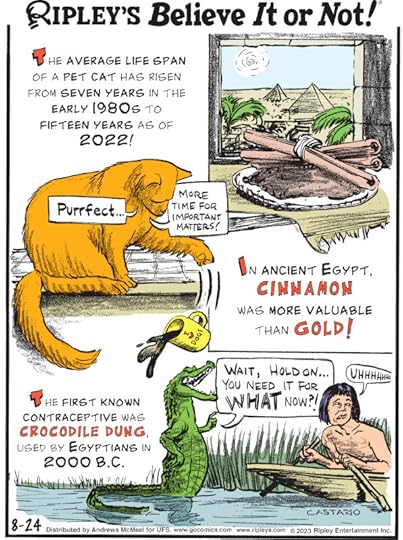Ripley Entertainment Inc.'s Blog, page 10
August 29, 2023
CARTOON 08-29-2023
August 28, 2023
CARTOON 08-28-2023
August 27, 2023
CARTOON 08-27-2023
August 26, 2023
CARTOON 08-26-2023
August 25, 2023
Up Close & Peculiar: Roosevelt’s Top Hat
Featured in Ripley's Believe It or Not!

Today: Roosevelt’s Top Hat
Speak softly and carry a big stick, and you might just get a peek at Theodore Roosevelt’s top hat! Roosevelt’s Signature Head wear
The Iconic HatToday I am here with this very unassuming carrying case that contains the top hat of none other than Teddy Roosevelt. Let’s crack this open!
This is the original carrying case for the top hat. I love the embossed gold initials on the front. There is definitely no mistaking who this belonged to.
Now let’s get to the good stuff! Look at that gorgeous silk interior! This “beaver silk” covered hat was a favorite of Roosevelt. He was known for being quite the fashionista in his time and loved a classic top hat. Inside the hat there is a large Dunlap & Company logo. but most importantly, you can see “Theo Roosevelt” stamped right on the bottom of the hat.
The Wild Life of President RooseveltIn my opinion, Roosevelt was one of the most Ripley’s-esque president’s we have ever had. Let’s go through some of his most unbelievable feats:
He was the youngest president we’ve ever had, taking office just shy of 43 years old. He was an avid outdoorsman and conservationist. He helped establish the United States Forest Service and many national parks and wildlife refuges. He was also a prolific writer and wrote over 35 books in his lifetime. Roosevelt was a skilled boxer and continued to spar and train throughout his life. He was even shot in the chest during an assassination attempt but delivered a 90-minute speech with the bullet still lodged in his body.Roosevelt loved animals and had a ton of pets with him at the White House, including a lizard, five guinea pigs, a badger, a one-legged rooster, an owl, a pony, a rabbit, and, of course, a small bear named Johnathan Edwards.Do you have any questions about the United States’ most interesting president? Leave your comments below! See you next time.
EXPLORE THE ODD IN PERSON! Discover hundreds of strange and unusual artifacts and get hands-on with unbelievable interactives when you visit a Ripley’s Odditorium!Ancient Japanese Islanders Created a Signature Skull Shape
Featured in Ripley's Believe It or Not!
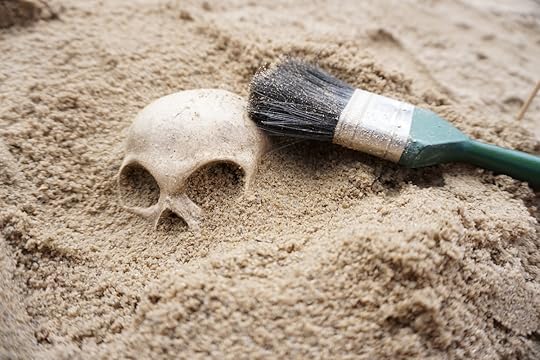
1,800 years ago, the Hirota people of Japan performed intentional cranial modification (ICM) on children, according to researchers from Kyushu University and the University of Montana. The practice, which took place between the third and seventh century CE, also occurred among other ancient civilizations on earth.
Spectacular Skull FindingsThe study, published in the journal PLOS ONE, reveals that both males and females were subjected to ICM. The practice, which took place prior to written history, involves pressing or bounding the head to deform the skull. People believe that the activity took place to mark a person’s group affiliation or social status.
Noriko Seguchi of Kyushu University’s Faculty of Social and Cultural Studies explained in a statement that there is a large-scale burial site in Tanegashima where the Hirota people lived 1,800 years ago. He noted, “This site was excavated from 1957 to 1959 and again from 2005 to 2006. From the initial excavation, we found remains with cranial deformations characterized by a short head and a flattened back of the skull.”
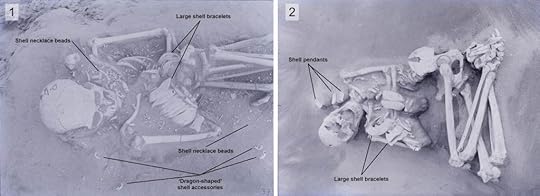
Image credit: Seguchi et al., PLOS ONE, 2023 (CC BY 4.0)
Until recently, researchers were not certain if the skull modifications were performed on purpose. Using 2D images, researchers analyzed the shape of the skulls’ outline. They also used 3D scans of the surface areas. The team compared the information from the Hirota people to that of the Doigahama Yayoi people in Western Yamaguchi and the Jomon people from Kyushu Island. They analyzed the contours and shapes of the different skulls.
The Results?The results “revealed distinct cranial morphology and significant statistical variability” between the various people, according to Seguchi. He added, “The presence of a flattened back of the skull… along with depressions in parts of the skull that connects the bones together” strongly suggested intentional cranial modification.
The anthropologists and archaeologists cannot pinpoint exactly why the Hirota people deformed their skulls; however, they believe it helped identify them as a part of a specific group of people. The practice may have aided in long-distance trade of shellfish.
The study asserts: “It is possible that cranial deformations were performed to create a group identity and facilitate trade of these shell goods.”
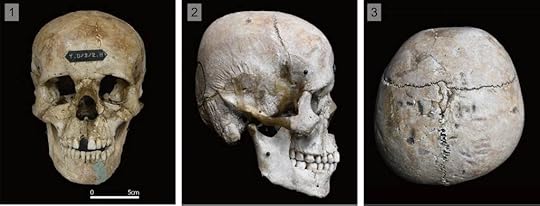
Image credit: Seguchi et al., PLOS ONE, 2023 (CC BY 4.0)
Want More?Take a deep dive into Ripley’s spectacular skull content. Learn all about the bound skull! On the island now known as New Britain within the Bismarck Archipelago of Papua New Guinea, skull binding was once a common practice. It typically occurred shortly after birth, usually after an infant’s first bath.
Don’t miss the skull bowl! Some societies used the bones of their ancestors for special rituals. In Tibet, people crafted traditional skull bowls using the scavenged remains of ancestors from sky burial sites. These bowls served as offerings to the mountain deities.
Gawk at a ram’s skull encased in a tree trunk: Ripley’s has a dozen ram skulls decorated with jewels from the remote Himalayan mountains of Tibet, but the most interesting ram skull in our archives is fully encased in the trunk of a 200-year-old tree!
Want to get up close and personal? Visit a Ripley’s Believe It or Not! location near you to see the odd in person! You might even see a skull or a mummy!
By Noelle Talmon, contributor for Ripleys.com
EXPLORE THE ODD IN PERSON! Discover hundreds of strange and unusual artifacts and get hands-on with unbelievable interactives when you visit a Ripley’s Odditorium!Source: Ancient Japanese Islanders Created a Signature Skull Shape
CARTOON 08-25-2023
August 24, 2023
Megalodon: The Prehistoric Shark That Made T. Rex Look Tiny
Featured in Ripley's Believe It or Not!

In 2023’s blockbuster Meg 2: The Trench, a team of scientists led by Jonas Taylor (Jason Statham) goes into a deep-dive into the Mariana Trench. A high-stakes battle with an illegal mining operation deep under the ocean soon ensues — and that’s before they run into gigantic prehistoric sharks.
But is the screen meg merely a figment of Hollywood imagination, or did it actually exist? Buckle up for a deep dive into the history of the megalodon, the biggest shark the oceans have ever seen.
Enter the MegalodonMillennia before The Meg or Jaws took over the big screen, the megalodon was roaming the deep blue. With a name that means “giant tooth,” it’s no surprise that the megalodon makes modern sharks look a little shrimpy.
The sea giant clocked in at a whopping 60 feet long — though some scientists estimate that it could’ve been closer to 80 feet — and weighed around 50 tons. That’s about the size of a bowling alley!
How Big Are Megalodon Teeth?What’s more impressive than a shark the size of a bus? A shark the size of a bus with 7-inch teeth! That’s almost three times the size of the tooth of a modern shark and double the size of the palm of your hand.
The megalodon’s teeth were built perfect for a menu that mainly consisted of whales. Couple that with megalodon’s massive jaws — 9 by 11 feet wide, — for a truly extreme bite.

The jaws of Carcharodon megalodon.
Experts believe the bite of a megalodon had a force of 40,000 pounds per square inch. A saltwater crocodile has the strongest bite of any modern animal, and that measures to “just” 3,700 pounds per square inch. Us humans? We can barely reach 200 pounds of bite force!
Megalodon vs. T. rex: Who Would Win?At a massive 40 feet in length, the T. rex was one the largest carnivores to ever roam the Earth. In the water, however, the megalodon was king.
The megalodon and the T. rex did not live at the same time, so a battle between the two giants could have never happened. The megalodon roamed the oceans during the Miocene and Pliocene eras 23 to 3.6 million years ago, long after the T. rex disappeared during the late Cretaceous period around 66 million years ago.

But if we were to dream of an epic battle, the megalodon’s sheer size and biting power could have given it an edge. While the T. rex bite packed a powerful 12,700 pounds of force (the strongest of any animal to ever roam the Earth’s surface), the megalodon’s bite (at 40,000 pounds of force) was just impossible to match.
What Happened to the Megalodon?The last megalodons are believed to have died about 3.6 million years ago — and scientists aren’t exactly sure why. With no natural predators or humans to hunt it, the megalodon likely met its demise due to the cooling of the planet.
According to the Natural History Museum in London, “up to a third of all large marine animals, including 43% of turtles and 35% of sea birds,” died off as the oceans cooled down. This affected the entire food chain and would have left the megalodon without much to eat.
As ice took over the planet, areas close to shore also froze and sea levels dropped, leaving the megalodon with no place to safely nurse its pups — and proving Mother Nature is mightier than even the largest beasts.
Where Can I See a Megalodon Shark Today?While you should feel lucky that you never have to encounter a live megalodon, you can see how you measure up to the prehistoric behemoth at Ripley’s Believe It or Not! locations around the world.

Our Jaws-dropping collection includes dozens of real megalodon teeth, as well as a few full-size replicas of megalodon jaws!
Looking to see sharks that aren’t extinct? Find a Ripley’s Aquarium near you and dive into adventure!
By Diana Bocco, contributor for Ripleys.com
EXPLORE THE ODD IN PERSON! Discover hundreds of strange and unusual artifacts and get hands-on with unbelievable interactives when you visit a Ripley’s Odditorium!Source: Megalodon: The Prehistoric Shark That Made T. Rex Look Tiny
CARTOON 08-24-2023
August 23, 2023
Skylab: 50 Years Since The Launch Of America’s First Space Station
Featured in Ripley's Believe It or Not!

The 1970s saw a number of scientific and technological innovations — the Apple II personal computer reached the market, floppy disks were invented, and the video game revolution got its start.
Fifty years ago, on May 14, 1973, the U.S. also made history by launching Skylab, America’s first space station.
Launching with a Bang and a RaceIn the 60s and 70s, space really was the final frontier. The U.S. and the Soviet Union were in an ongoing battle to conquer space — and for a while, it seemed the Soviets were winning. The world’s first space station, Salyut 1, was launched by the Soviets in 1971, prompting NASA to take action to make sure they were not left behind.
Born from the successes of the Apollo moon landings, Skylab was the next big step in space exploration. A place to carry out investigations and learn more about the universe and ourselves.
Skylab: The Space MarvelWeighing a whopping 170,000 pounds, Skylab remains the heaviest spacecraft to ever make it into space. It carried telescopes, solar panels, and groundbreaking special solar observatories.
Inside, the space station was packed with working, living, and sleeping compartments for the crews, exercise equipment, and experimental stations. It even had the first-ever zero-gravity shower!
Space TenantsBetween 1973 and 1974, three crews (Skylab 2, 3, and 4) took residence in Skylab and made it home. The first crew, in May 1973, set the original record for the longest continuous time humans ever spent in space. These astronauts also took some of the best (and earliest) photographs of the Earth. They studied the effect of weightlessness on the body, and monitored weather.

Skylab from Skylab 2 mission departure. Credit: Wikimedia Commons.
In July 1973, the three crew members of Skylab 3 rocketed into space for a 59-day trip. In addition to performing medical studies to understand how the human body reacts to time in space, they also photographed the Comet Kohoutek. The crew had some unusual companions for the trip — spiders Arabella and Anita were brought along for the ride to study whether spiders could spin webs in near-weightlessness (turns out they can!)
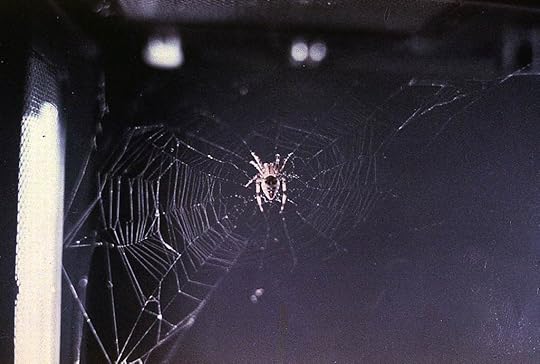
Arabella’s web aboard third Skylab mission.
Later that same year, Skylab 4 took off. The crew would end up spending an unprecedented 84 days in space. During which, the crew captured photographs of solar flares and completed four spacewalks. Despite some issues with communications and equipment, the crew of Skylab 4 laid the groundwork for all future manned space endeavors.
The Shining Legacy of a Space PioneerThe Skylab crews spent a combined 171 days in space. Their groundbreaking solar research and studies on human physiology helped shape the design, functionality, and scientific goals of future projects. Even including the colossal International Space Station.
Although no new manned missions were sent over to Skylab after 1973, the space station remained in orbit for several more years. Over time, however, it was very clear Skylab wasn’t doing well. High sunspot activity began to deteriorate the station and increased drag. By 1978, it was clear that the first US space station was dying. In July 1979, Skylab finally fell out of orbit and crashed through the atmosphere over Australia, showering the ground with sparks as it disintegrated on its way down.
Fifty years on, Skylab’s legacy still echoes in today’s space exploration — a reminder of where we’ve been, what we’ve achieved, and the infinite possibilities of where we might go.
By Diana Bocco, contributor for Ripleys.com
EXPLORE THE ODD IN PERSON! Discover hundreds of strange and unusual artifacts and get hands-on with unbelievable interactives when you visit a Ripley’s Odditorium!Source: Skylab: 50 Years Since The Launch Of America’s First Space Station
Ripley Entertainment Inc.'s Blog
- Ripley Entertainment Inc.'s profile
- 52 followers







